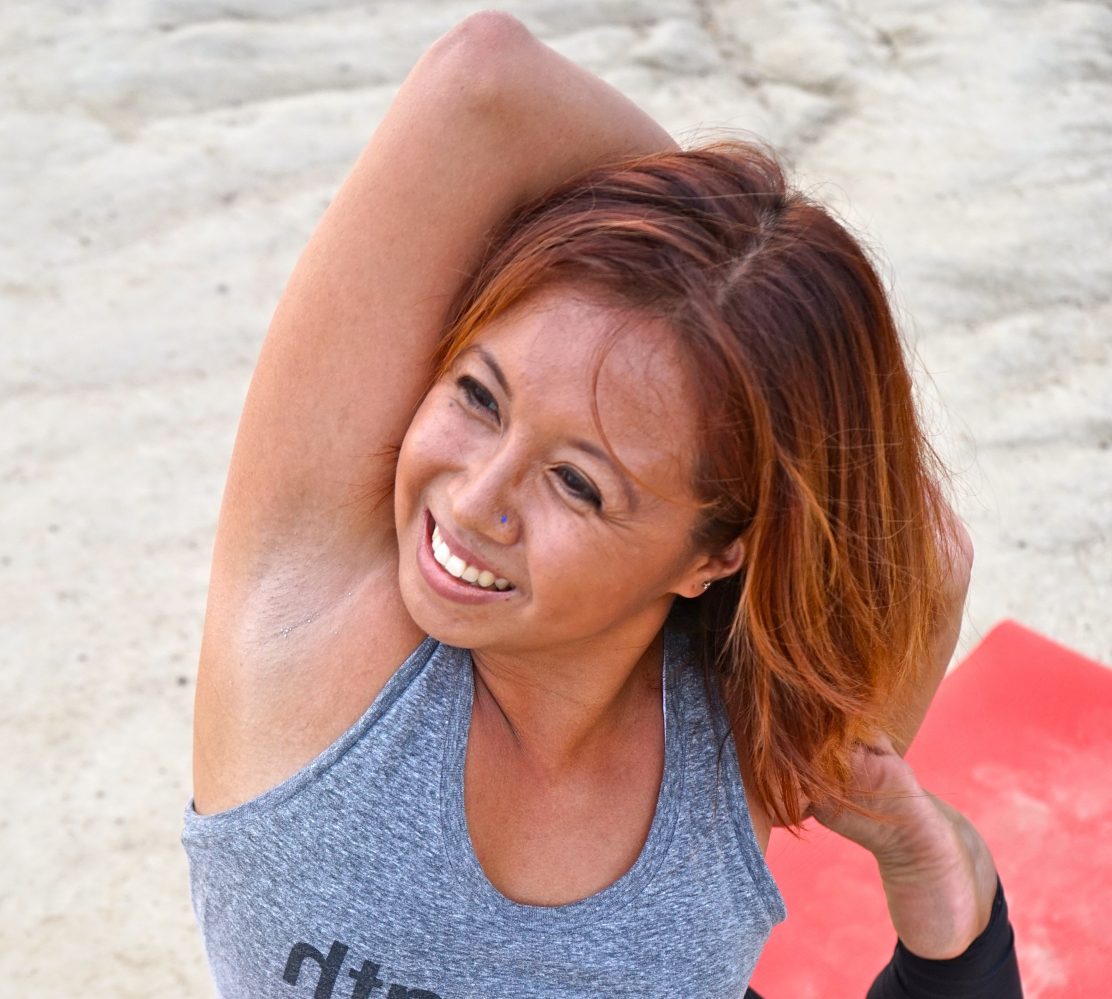It happened a few weeks ago. I was taking an ashtanga class and moving into padmasana, or lotus pose. Lotus is a pretty challenging pose for me anyway and had been even more so in the past couple of months. Nonetheless, I thought I might be open enough to try it. I moved slowly, remembering to flex my right foot firmly, externally rotating my right hip and drawing my foot toward my navel first to get the alignment before moving deeper into the pose.
And then I heard a pop.
I immediately released my leg and extended it. I may have even placed it on a block. I made it through the rest of that class, but my plans for a second class disappeared. Instead, I sat in the back corner, leg propped up on a bolster, and simply observed.
I went home that night and iced my knee. Kept it elevated. Took some NSAIDs. I remembered that my friend and teacher Jenna had just had a similar experience, so I knew I needed to be careful, even though my knee didn’t hurt at the time.
Over the next couple of weeks, I tried to take it easy and be mindful about my knee. I wasn’t always successful, especially when I was teaching. I would get carried away demonstrating and wind up with pain that night. I eventually realized that the simple movement of externally rotating my knee, as well as pressure on the front of the kneecap, caused me a lot of discomfort and some pain. Even reclined pigeon was not comfortable.
Eventually, I saw my doctor, who checked my movement and asked me some questions. Ultimately, his diagnosis—pending tests—was that it was likely a tear in my meniscus. Naturally, I went home and googled the signs for this kind of injury and yup, it sounded a lot like what I had.

Hearing the word “tear,” especially in relation to your knee, is a scary thing. I knew in my head that at least it wasn’t an MCL or ACL tear, that I didn’t have significant pain, that I could still walk, that my knee wasn’t locking out, and that all of these were good things. Nonetheless, it made me nervous. Even if it wasn’t serious now, I certainly didn’t want to do anything to make it worse. Knowing there was the possibility of a tear made me even more cautious and careful in how I moved and how I was caring for my knee.
Having an injury, any injury, can be an incredibly humbling experience. I never realized how much I externally rotate my knee, even without realizing it. When I lie flat on my back, my tendency is to let my feet flop outwards. Can’t do that! At least, it certainly doesn’t feel great. I can’t sit cross-legged. I can’t tuck my right knee underneath me when I’m sitting, which I usually do without even thinking about it. As far as yoga goes, even child’s pose is inaccessible to me right now. It has been a lesson in learning to listen to my body and not let ego dictate what I do. It’s also been a challenge to find modifications in poses that I’ve taken for granted—let’s just say props have become very good friends.
However, the other thing I’m discovering as I go through this process is that injuries can also be empowering in a number of ways. While there are a number of things I’m struggling with, movement-wise, there are other parts of my body that I can open up and strengthen. It has been exciting and exhilarating to discover (and in some cases, re-discover) what my body is capable of, notwithstanding what’s going on with my knee. And while I just said it was a “challenge” to find modifications for poses, especially in the middle of a vinyasa flow, I’ve learned to be curious about different poses to get the same or similar benefits that work for me and how I can share them with others.
I have a follow-up appointment with my doctor this week to talk about my knee and what my options are. Chances are, I’ll just need to let it heal and take it easy, which can be the hardest part. But I’m thankful to have discovered that resting doesn’t mean I’ve hit any kind of rut in my own practice and teaching.


